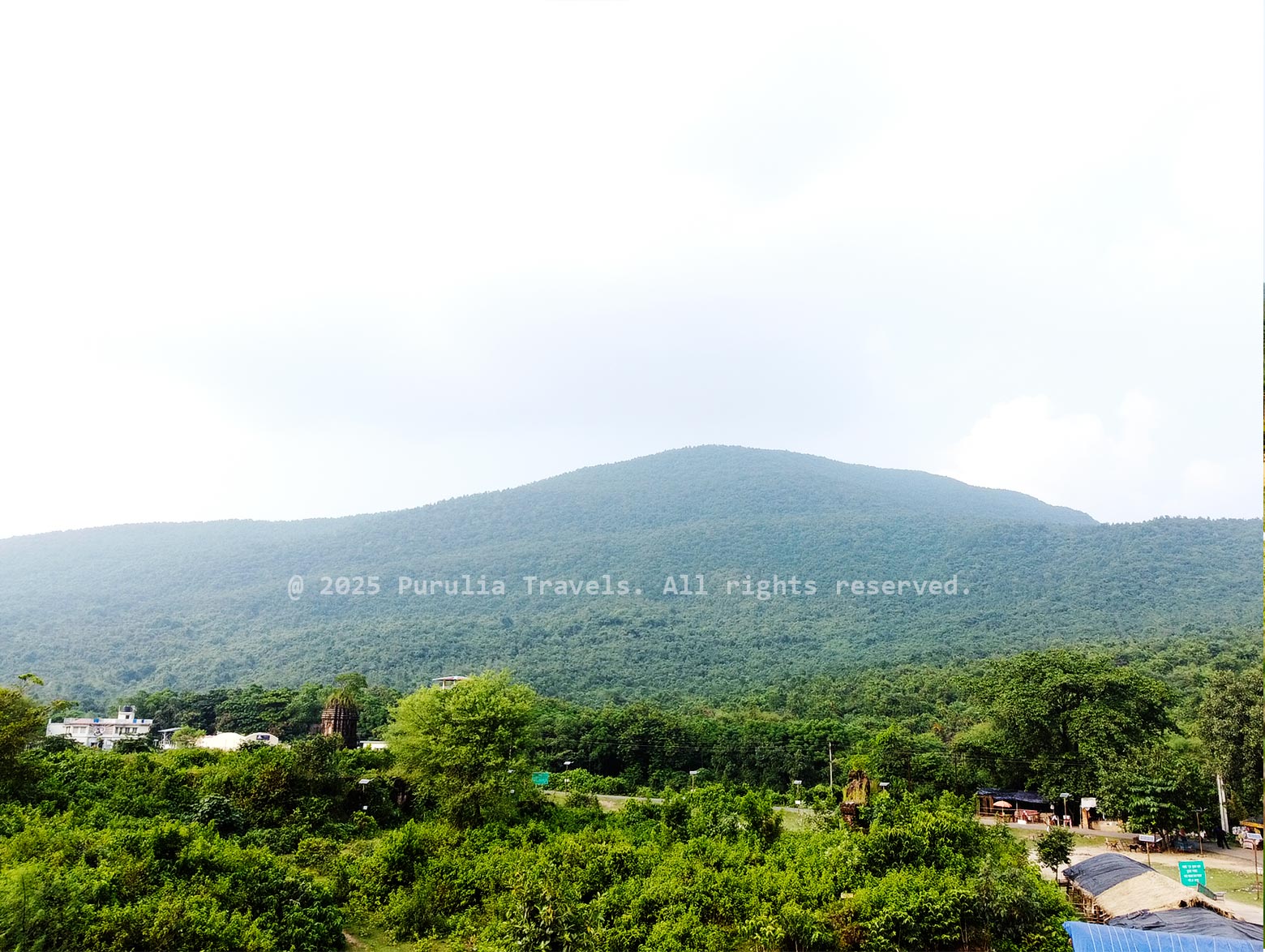










Garh Panchkot near Panchet Dam in Purulia is rich in history, having ancient ruins and temples. Founded by the Panchakot dynasty in the 1600s the location is historically valuable due to the Bargi attack of the 18th Century. Nowadays, one may still visit the ruins of this former flourishing empire, with panoramic views of Panchet Hill and the adjacent valley. According to the history and nature that come together, Garh Panchkot is a perfect spot for history lovers as well as nature admirers.
Set among the rolling hills of Purulia, Garh Panchkot lies like a silent sentinel to the magnificent history of the Panchkot Raj, a glorious kingdom that one called this home. Founded in 940 AD by Damodar Sekhar, a child believed to have been raised by the Kudmi (Mahato) community, the Panchkot dynasty began to rule from this hill-fort. The kingdom further expanded, eventually relocating its capital to Kashipur.
Garh Panchkot—a collection of abandoned temples, crumbling stone structures, and unforgiving remnants of a royal palace—is the erstwhile location of a kingdom that was prosperous and rich in culture. This area, too, was linked to the ancient Tilakampa Kingdom.
The royal palace and remains of the Pancharatna temples came under successive attacks during the Bargi invasion.However, the architectural genius of the Panchkot rulers and their engineering expertise continues to be evoked today in the remains of the Pancharatna temples, the elaborate palace complex, and the nearby Dhara spring (500 meters uphill).
Among the brightest faces of this royal figure is the name of Maharaja Jyotiprasad Sing Deo, the 67 th king of the Panchkot Dynasty, born in 1881. He became the king in 1901, and featured administering officially in 1903. His leadership was a golden age for Kashipur bringing him the honor of being remembered as “Raja Bahadur of Kashipur” by the British in 1921 after prior acknowledgment by Nawab Wasif Ali Mirza of Murshidabad in 1912.
Culture and architectural activities prospered under his patronage. He commissioned the Raj Rajeswari temple in Kashipur, Kali Mata Jyotishwar Shiv Mandir in Kashi, and finished Kashipur palace constructed in 1920-12 years at an expense of Rs. 32 lakhs. A true devotee to arts, Maharaja Jyotiprasad started the Saraswata Samaj in 1926 nurturing music, literature and theatre, and curated a multilingual library inside his palace.


He was also known for philanthropy, giving away Rs. 1 lakh to Purulia Sadar Hospital, Rs. 50,000 to Lady Dufferin Hospital, and another Rs. 50,000 to the Imperial Relief Fund, and helping schools, orphanages, and other public charities.
Earning Kashipur a literary feather upon its cap, the greatest Bengali poet of modern times, Michael Madhusudan Dutt, worked briefly for Kashmir’s Raj in 1872. Also known as the Zamindari Raj of Panchkot, Go-banshi Rajput, Panchkot Raj’s legacy remains the backbone of Purulia’s ethos.
Even with the fallen stone and decrepit temple ruins of Garh Panchkot, one can still hear the murmurs of how royal this world once was amidst the forests and terrorist country sides – beckoning travelers, historians, and even those who seek to undergo the apprehension of what this kingdom should be recognized during its reign.
Garh Panchkot is a historical gem with many significant sites showing the ancient architecture and cultural significance of the place. Here are the significant places to visit and things to do:







Each season at Garh Panchkot has something different to offer. Whether it is the cool weather of winter, green and misty monsoon, or silent summer nights, Garh Panchkot remains an amazing destination throughout the year.


When you’re in Garh Panchkot, make sure you explore some of the beautiful and culturally significant sites nearby as follows
| Location | Attractions | Distance from Garh Panchkot | Read More |
|---|---|---|---|
| Baranti Lake | Known for its serene lake and blooming Palash flowers in spring | 11 km | Read More |
| Joychandi Pahar | Hilltop shrine of Chandi Mata, rock climbing, and panoramic views | 20 km | Read More |
| Telkupi | Submerged ancient temples and peaceful boating on the dam waters | 30 km | Read More |
| Banda Deul | 11th-century stone temple and heritage archaeological site | 30 km | Read More |
Purulia Railway Station is well-connected and located about 322 km from Kolkata. You can take convenient trains like Ranchi Vande Bharat Express (20898), Chakradharpur Express (18011), Purulia SF Express (12827), or Ranchi Intercity Express (18627). After reaching Purulia Railway Station, you can hire a private vehicle from Purulia Travels. The vehicle will take you to the Gobag Bus Stand, from where it will take a right turn and drive around 1.5 km to reach the Garh Panchkot area. The journey offers a smooth ride with scenic countryside views.
Purulia is easily accessible by road from nearby cities such as Bankura, Asansol, Bokaro, Jamshedpur, and Ranchi. If you're coming from Kolkata, you can take a bus from Esplanade, where multiple government and private buses operate, including some with AC service. All buses drop passengers at the Purulia Bus Stand. From there, you can hire a private vehicle from Purulia Travels to reach Garh Panchkot. The vehicle will take you to the Gobag Bus Stand, then turn right and drive around 1.5 km to reach the Garh Panchkot area. If you are driving your own car, follow the same route after reaching Purulia Town.
The closest airport is Birsa Munda Airport in Ranchi, about 117 km away. Another option is Kazi Nazrul Islam Airport in Durgapur, which is around 164 km away. From either airport, you can take a train or bus to reach Purulia Town. After arriving in Purulia, hire a private vehicle from Purulia Travels. The vehicle will take you to the Gobag Bus Stand, from where it will take a right turn and drive around 1.5 km to reach the Garh Panchkot area. The road journey from the airport is comfortable and offers pleasant views.
Find quick answers to all your questions about visiting Garh Panchkot.
Garh Panchkot is famous for its historical ruins, including the remains of the Panchakote Palace, ancient temples, and the Dhara spring. It offers both historical exploration and natural beauty.
The best time to visit is during the winter months (October to March), when the weather is pleasant for sightseeing and outdoor activities. Also in the spring to watch the beautiful Red and Orange Polash Flower.
Subscribe to see secret deals prices drop the moment you sign up!
WhatsApp us

